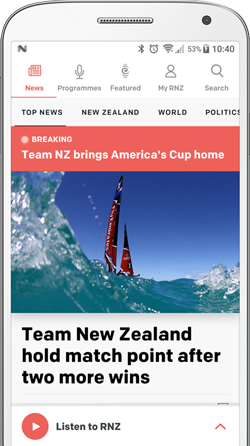
Photo: Supplied
Tests on drinking water in Saipan, in the Commonwealth of Northern Mariana Islands (CNMI), and Guam have revealed high levels of per- and poly-fluoroalkyl substances (PFAS, commonly referred to as 'forever chemicals').
The information, shared in a conference in Saipan, said that wells on the CNMI island are among the most contaminated in the US.
Travis Spaeth, chief engineer and safe drinking water program manager at the CNMI Bureau of Environmental and Coastal Quality, said Saipan has four drinking water entry points ranked among the 15 most PFAS-contaminated systems in the entire United States.
One well near the Francisco C. Ada/Saipan International Airport, previously used for firefighting training, had concentrations exceeding more than 1,700 times above the new federal maximum contaminant level.
The CNMI has its own maximum level - which is higher - but authorities are racing to comply with the stricter US standard, which requires full compliance by 2031.
To meet that, the Commonwealth Utlities Corporation has installed granular activated carbon filters at multiple sites, bringing PFAS levels down to undetectable levels in some areas.
However, Spaeth warned that maintaining the filters and managing the spent material off-island is expensive and logistically difficult.
Spaeth said long-term options such as aquifer remediation, expanded rainwater catchment systems, and even energy-intensive desalination must be considered.
The CNMI is also exploring partnerships with the US military and the Federal Aviation Administration - both historically linked to PFAS use - for support in cleanup funding and possible future blood testing for exposed residents and first responders.
Guam: Capital city leads US territory in PFAS risk
In Guam, PFAS hotspots include landfills, firefighting training sites, airport crash zones, and military bases.
Two staff from Guam's Environmental Protection Agency (EPA), Sierra Armstrong-Bettis and Nicole Ha'ane Diras, also presented at the symposium.
Using data from EPA region nine and Guam Waterworks Authority, their analysis found PFAS contamination across all parts of the island, with particularly high levels in Hagåtña, Sinajana, Agana Heights, and Mongmong-Toto-Maite.
The Guam EPA team overlaid contaminant data with population risk factors such as daycare centres, schools, low-income housing, and clinics. They found the most at-risk groups often live in areas with limited access to alternative water sources like water refill stations.
Granular activated carbon remains the main treatment tool in Guam, but like in Saipan, disposal and replacement of spent filters is a growing challenge.
Diras and Armstrong-Bettis called for greater US government investment.





